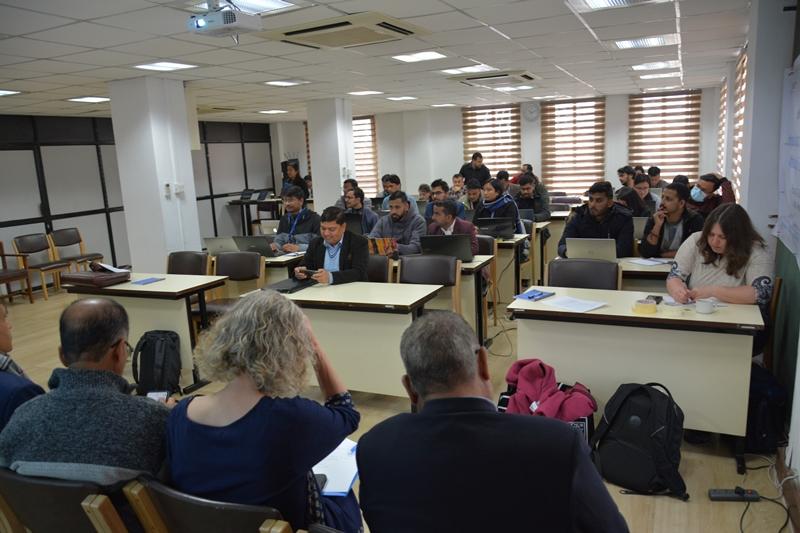
A workshop on "Earthquake Hazard Assessment and Aftershock Forecasting" was conducted in Lalitpur from February 27 to 29, 2024. The program aimed to enhance the capacity for earthquake hazard assessment in Nepal and work towards establishing a collaborative system for regular discussions and consensus processes on seismic hazard evaluation among seismic hazard and earthquake engineering professionals.
The three-day event was jointly organized by the National Society for Earthquake Technology-Nepal (NSET) and the United States Geological Survey (USGS), in collaboration with Earthquake Safety Solutions (ESS), under the guidance of the Department of Mines and Geology (DMG) and the National Disaster Risk Reduction and Management Authority (NDRRMA) of the Government of Nepal, with funding support from USAID/Bureau for Humanitarian Assistance (BHA).
The workshop focused on Probabilistic Seismic Hazard Analysis (PSHA) and its concepts, methodologies, and tools, recent developments in seismic hazard evaluation in Nepal, forecasting future seismic risk, aftershock forecasting, and efforts in instrumentation for collecting seismic data.
Speaking at the workshop, Dr. Susan Hough, a seismologist from USGS, clarified the concept of aftershocks, their basic features, and past experiences related to various major earthquake events worldwide, including the 2015 Gorkha Earthquake and subsequent aftershocks.
Mr. Santosh Gyawali, AID Development Program Specialist in Disaster Risk Reduction/Preparedness of USAID/BHA in Nepal, highlighted major initiatives in the past and present between USAID/BHA and NSET.
Also, speaking at the program, Dr. Amod Mani Dixit, President of NSET, extended his sincere thanks to USAID/BHA and USGS for their continuous supports and welcomed the participants present for the program.
Prof. Dr. Tara Nidhi Bhattarai from Tribhuvan University emphasized the significance of the workshop in the context of earthquake risk in Nepal and wished for the successful completion of the program.
A team of facilitators at the workshop, including experts and senior professionals from the Nepal Government, academia, NSET, and USGS, conducted the course. The workshop was part of an ongoing collaborative effort of organizing partners in association with various academic institutions and agencies. A total of 40 senior and young professionals working or interested in seismic hazard studies participated in the workshop, including researchers, students, and practitioners involved in seismology, geology, geophysics, earthquake engineering, geotechnical engineering, civil engineering, and disaster risk management.
Image gallery




